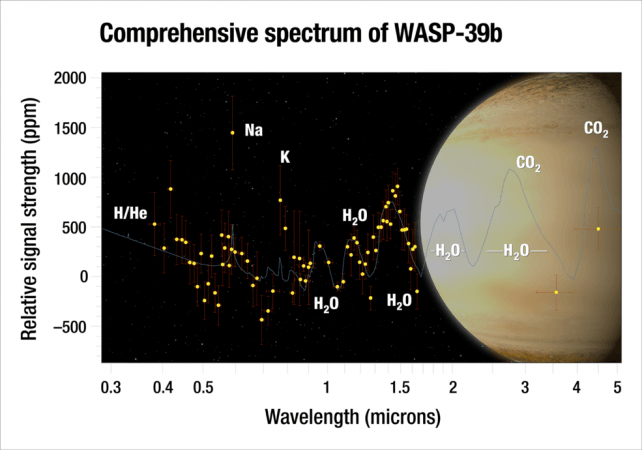![[Representational Image] The exoplanet, called WASP-39b, is located more than 20 times closer to its star than the Earth is to the Sun. The exoplanet, called WASP-39b, is located more than 20 times closer to its star than the Earth is to the Sun](https://data1.ibtimes.co.in/en/full/681951/exoplanet-called-wasp-39b-located-more-20-times-closer-its-star-earth-sun.jpg?h=450&l=50&t=40)
In their endless search for Earth-like planets, NASA astronomers have stumbled upon a unique exoplanet some 700 light-years away from our planet. Dubbed WASP-39b, this alien world's atmosphere is estimated to have water three times more than Saturn does, but it's so extremely hot that life cannot thrive on its hot and bloated surface.
Astronomers used NASA's Hubble and Spitzer space telescopes to discover the huge amount of water in WASP-39b's atmosphere. Although this "hot Saturn" doesn't belong to our solar system, the researchers believe that it will still help them better understand how and where planets form around a star.
The massive amount of water in the exoplanet's atmosphere suggests that it must have formed far away from its host star, where it was probably showered by a lot of icy material. WASP-39b then likely embarked on an interesting journey across its planetary system as it migrated in, destroying planetary objects in its path, according to the researchers.
"We need to look outward so we can understand our own solar system," lead investigator Hannah Wakeford of the Space Telescope Science Institute in Baltimore, Maryland, and the University of Exeter in Devon, UK, said in a statement. "But exoplanets are showing us that planet formation is more complicated and more confusing than we thought it was. And that's fantastic!"

WASP-39b revolves around its star, called WASP-39, once every four days. Unlike the Earth, the exoplanet's orbital period matches its rotational period; therefore, it always shows the same face to its star.
According to astronomers, the distance between WASP-39b and the star is 20 times closer than the distance between the Earth and the Sun. While the day-side temperature on the exoplanet is as much as 1,430 degrees Fahrenheit (776.7 degrees Celsius), powerful winds transport the heat around the planet, keeping the night-side temperature almost as hot.
Using Hubble and Spitzer, the researchers managed to analyze the atmospheric components of the exoplanet, and found clear evidence for water in the form of vapor. Their next step will be to use the James Webb Space Telescope, which is scheduled to launch in 2019, to have an even closer look at the exoplanet and its atmospheric carbon.
"WASP-39b shows exoplanets can have much different compositions than those of our solar system," co-author David Sing of the University of Exeter in Devon, UK said in the statement. "Hopefully this diversity we see in exoplanets will give us clues in figuring out all the different ways a planet can form and evolve."















